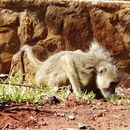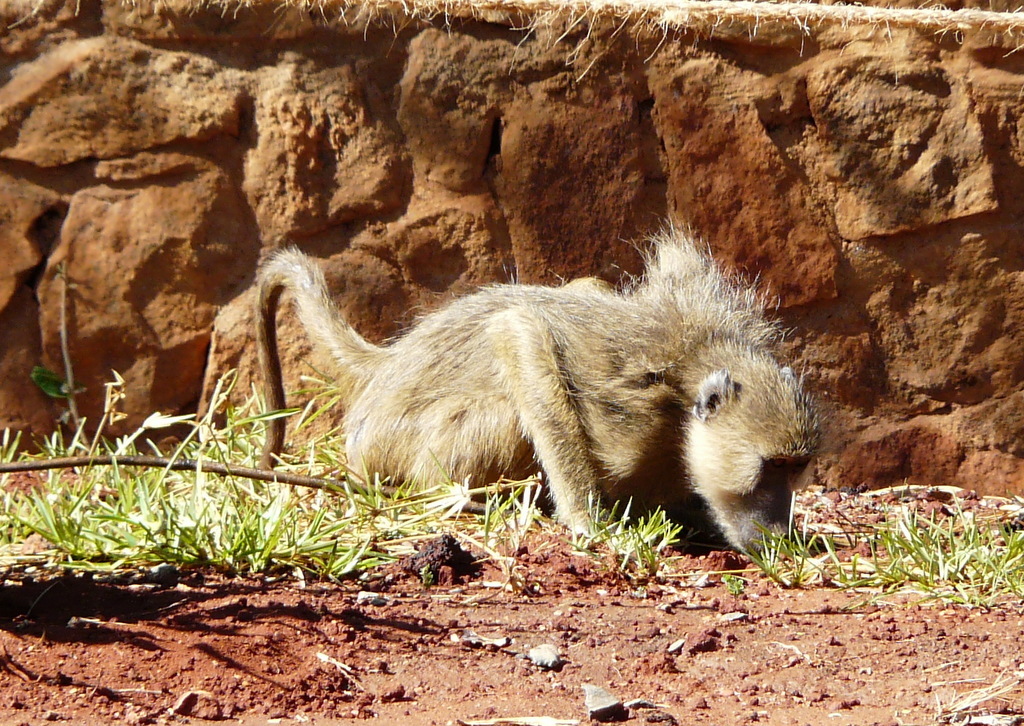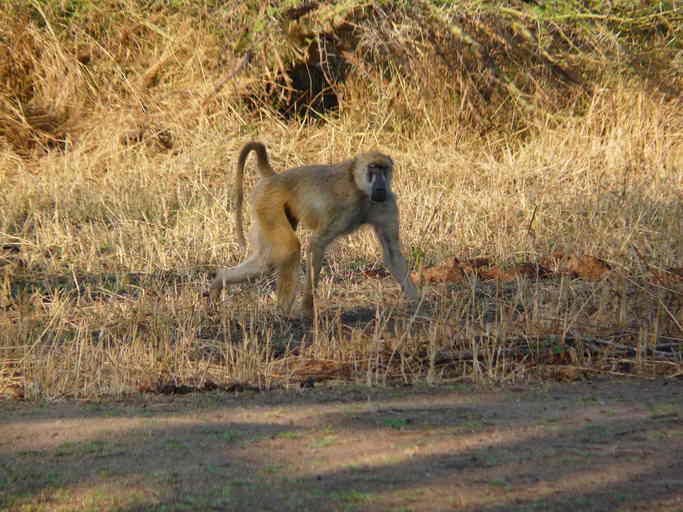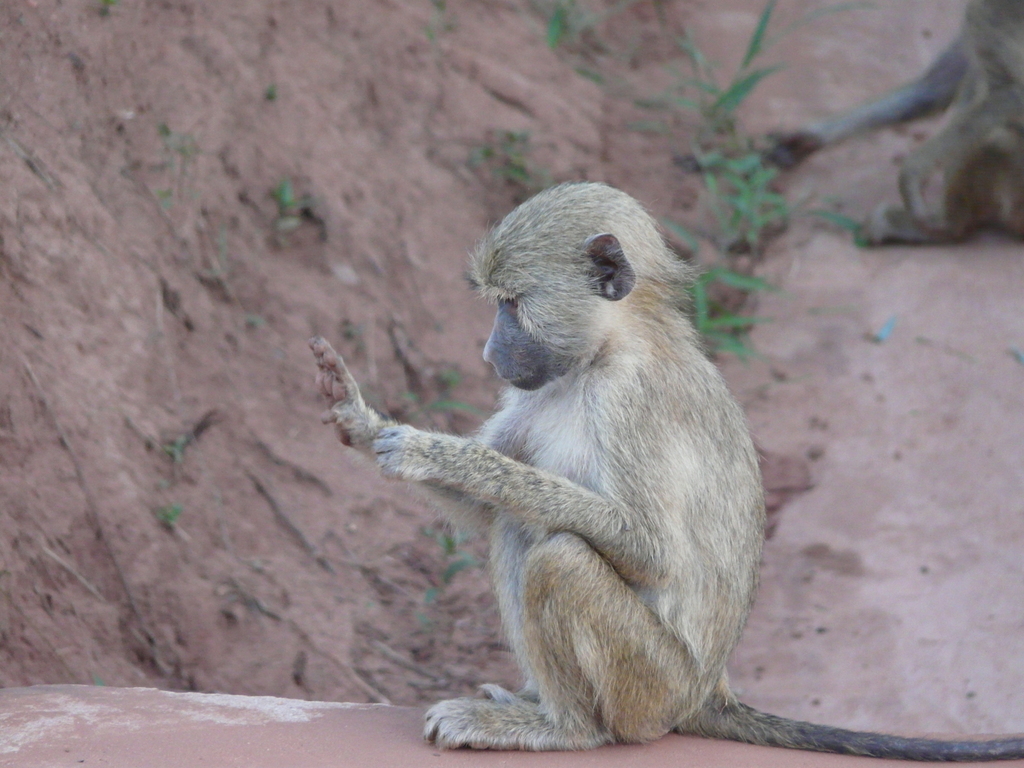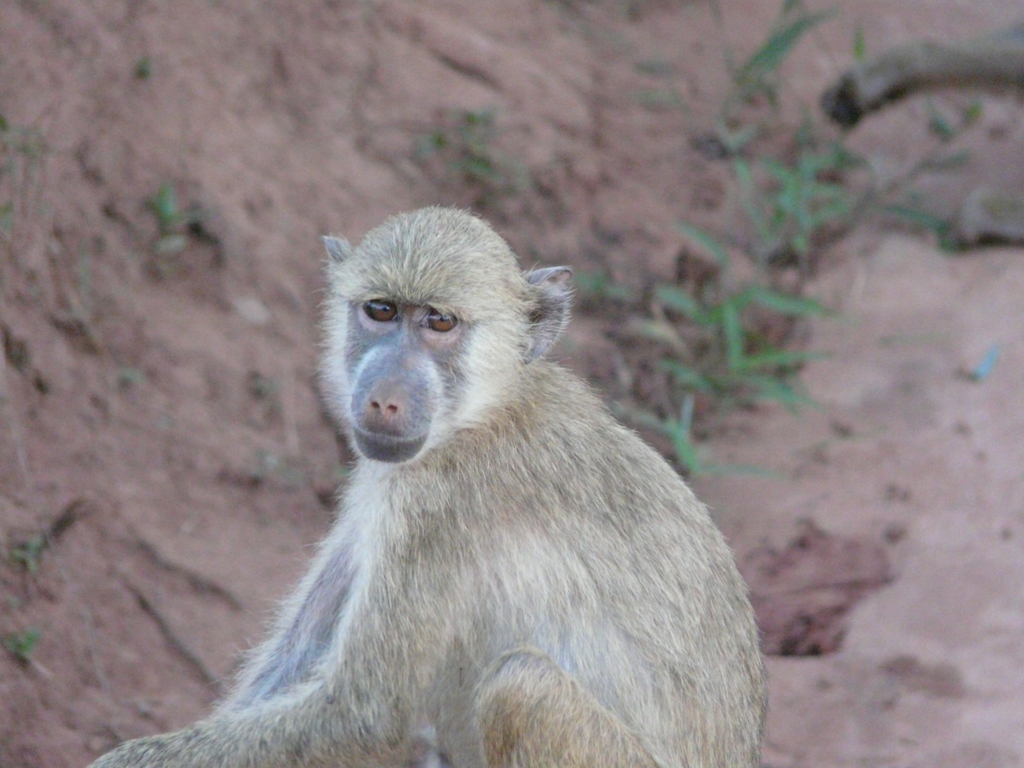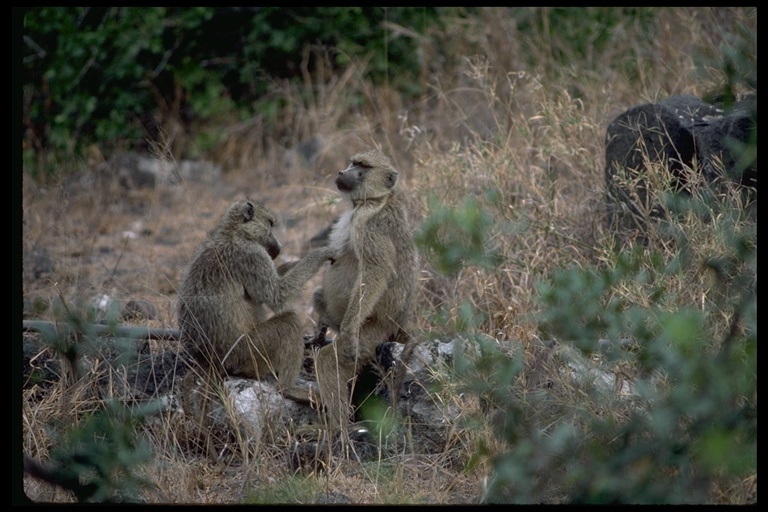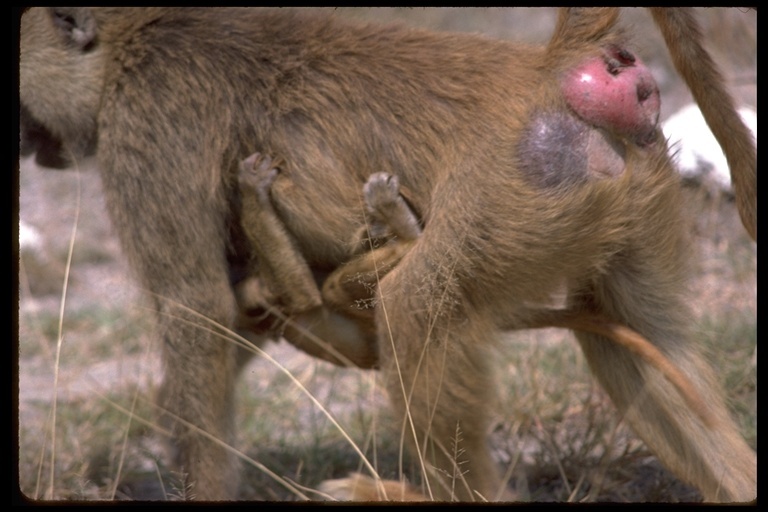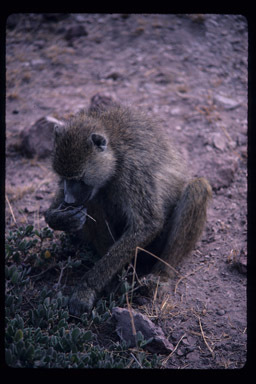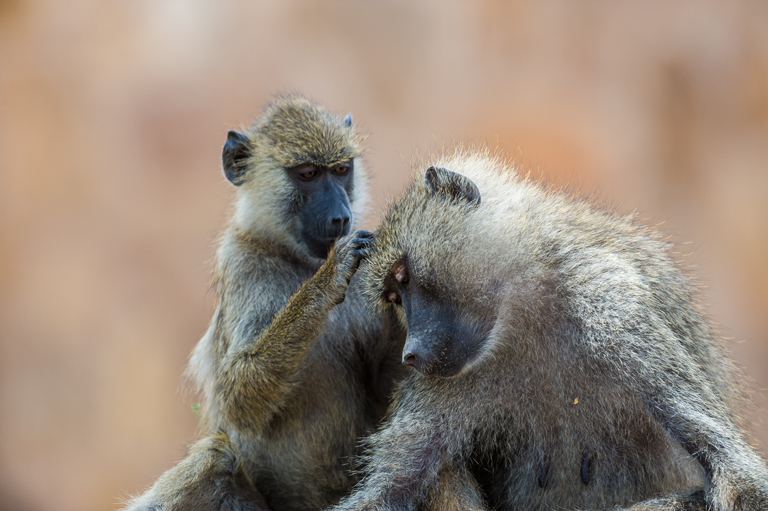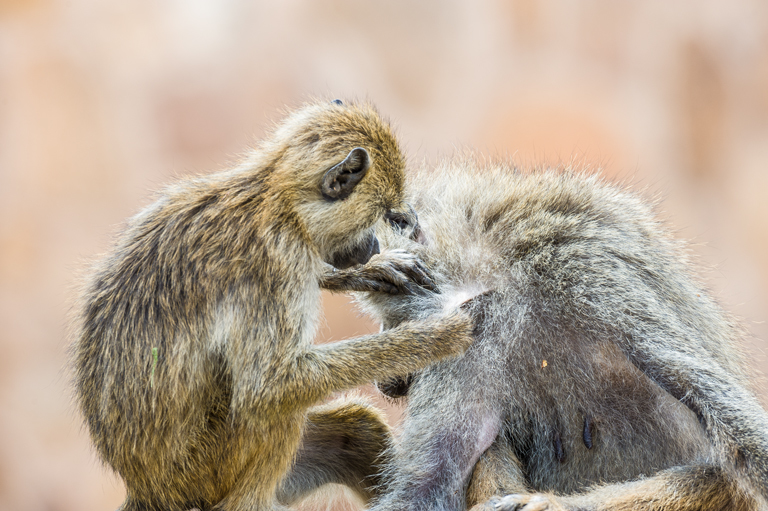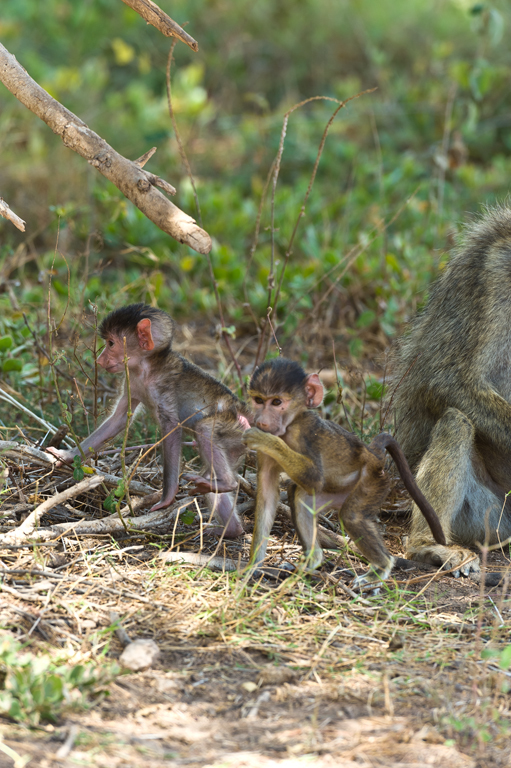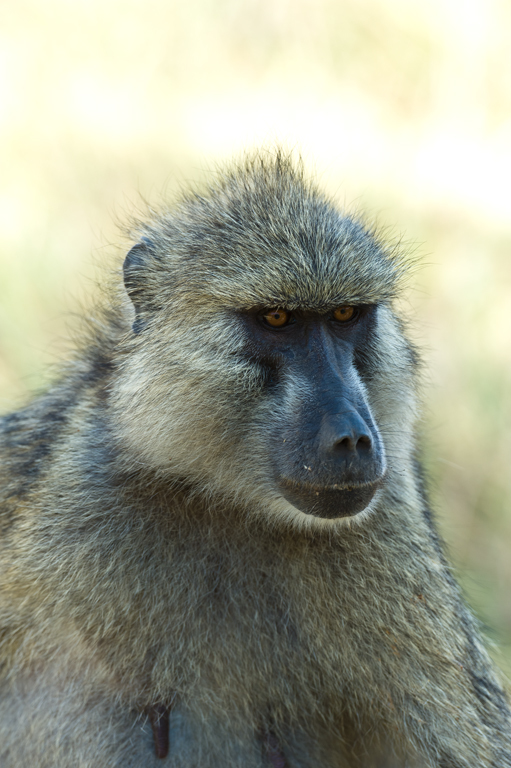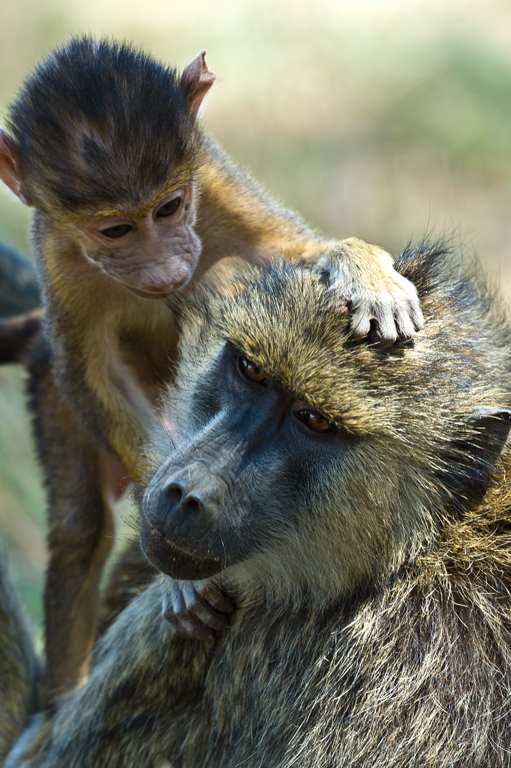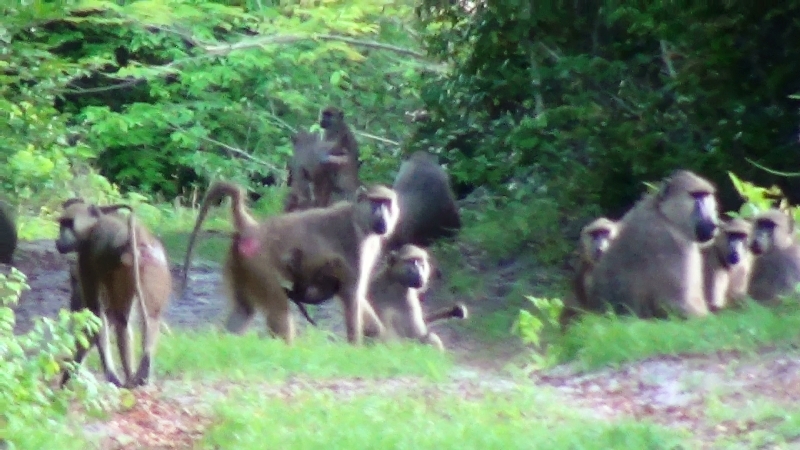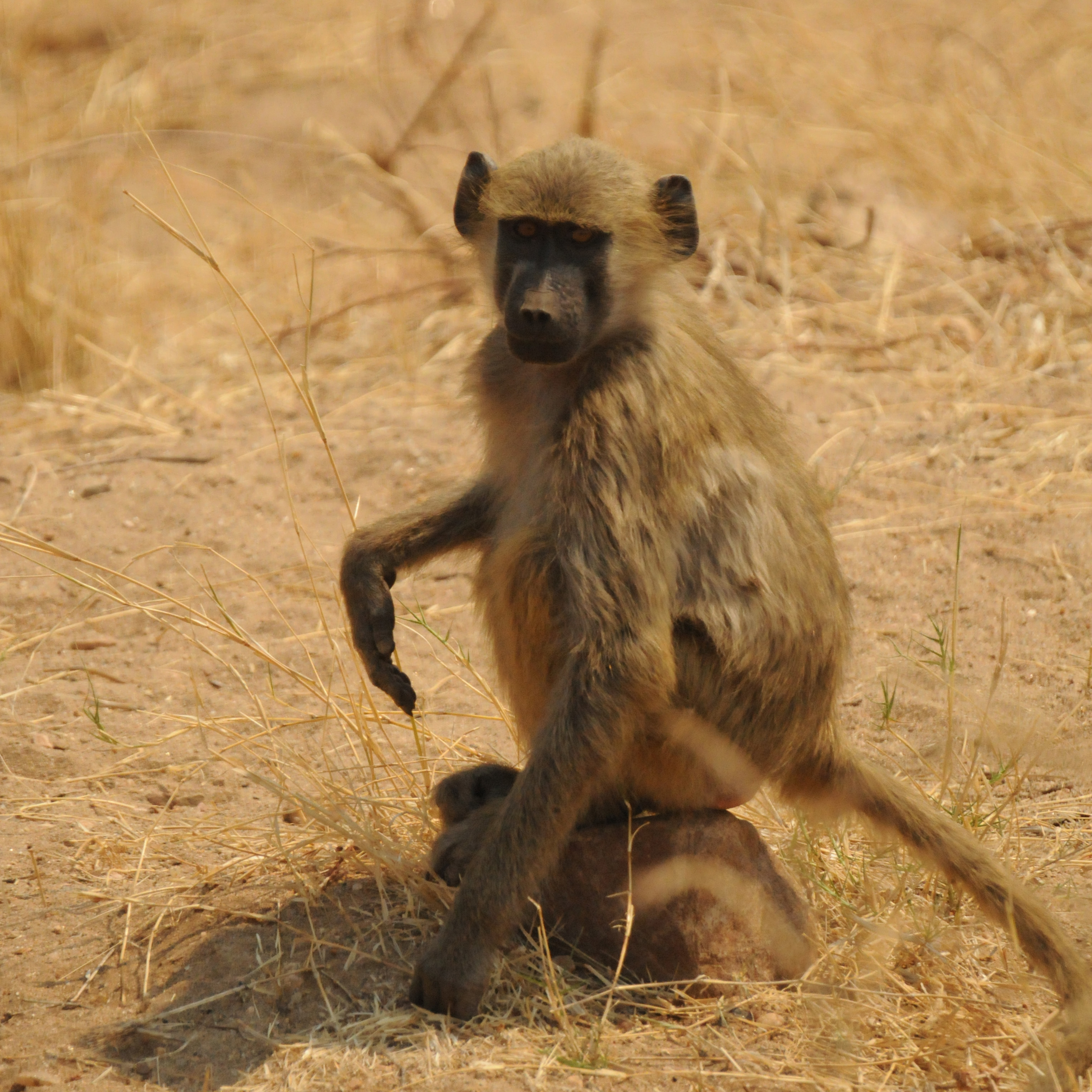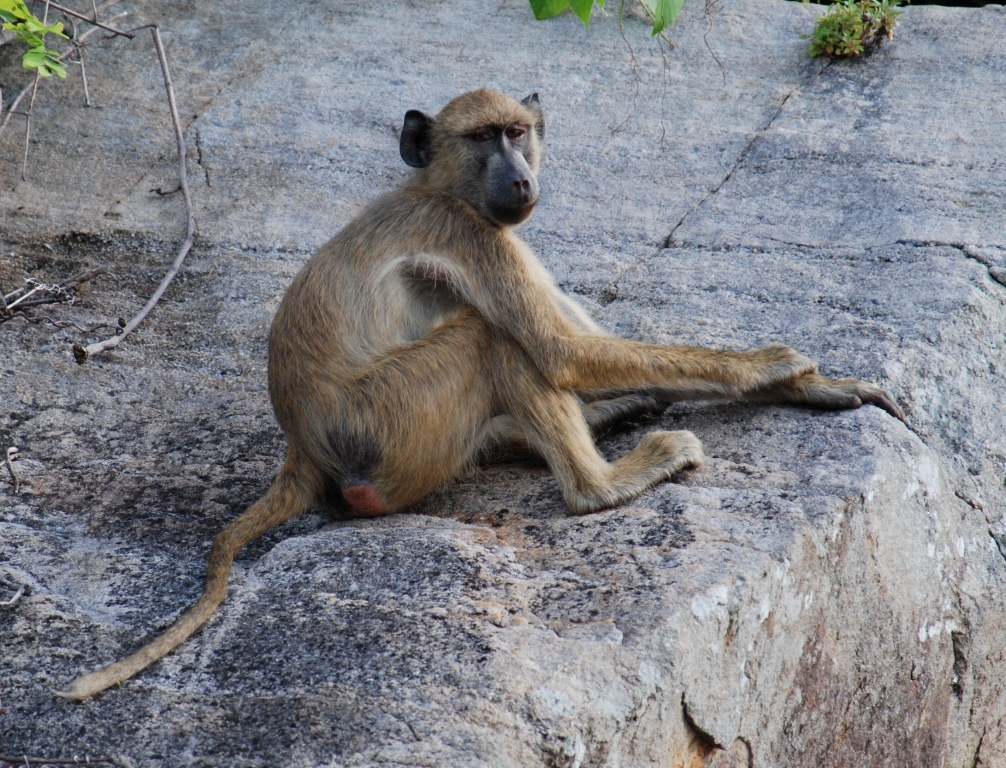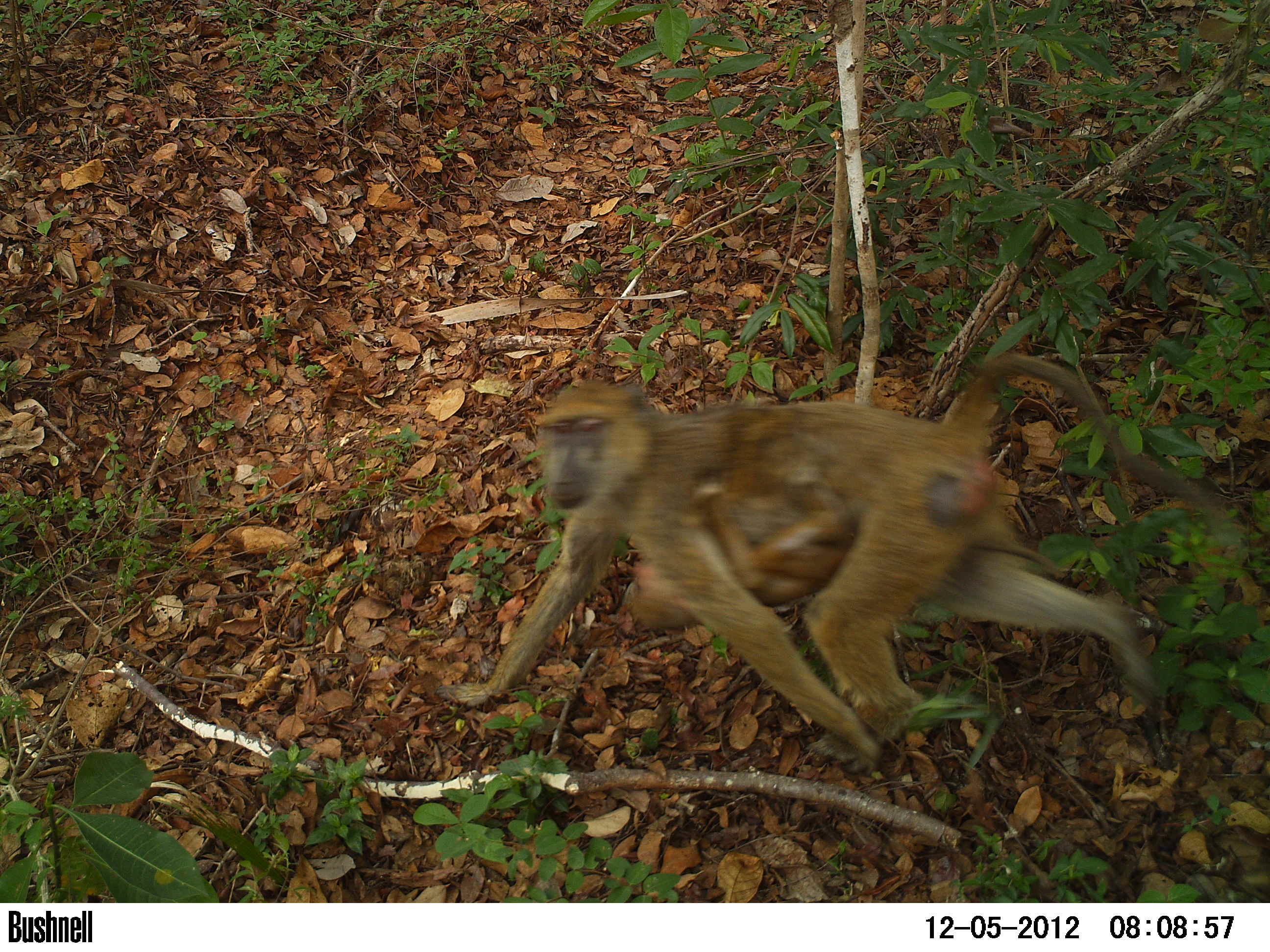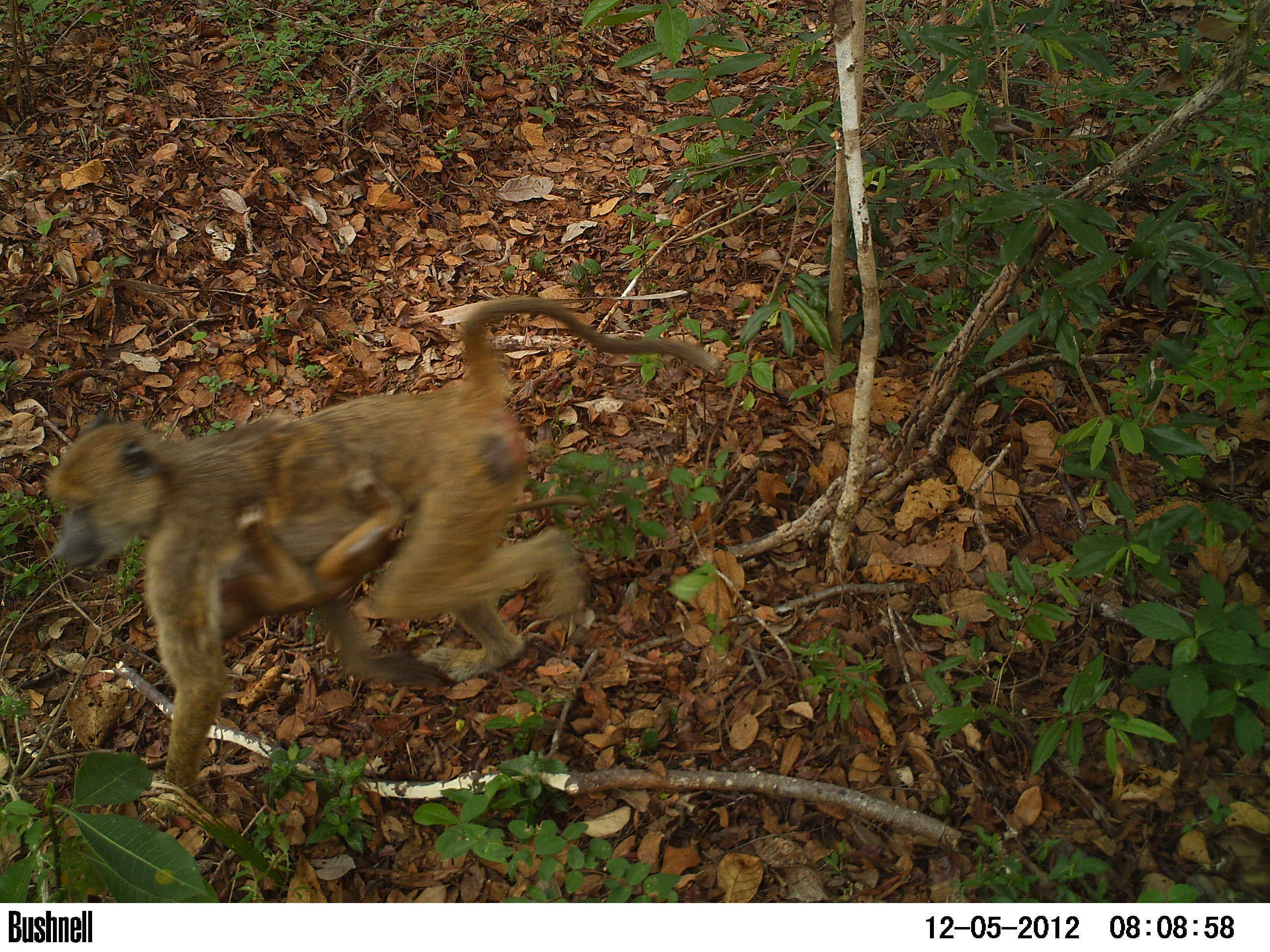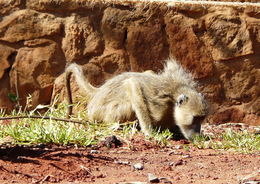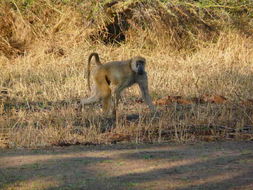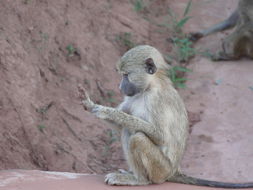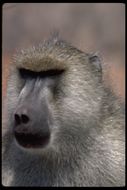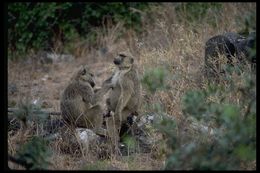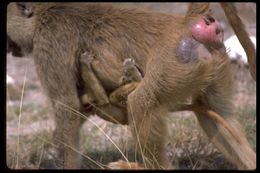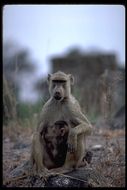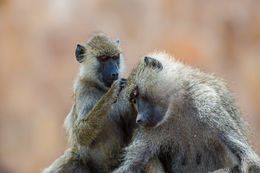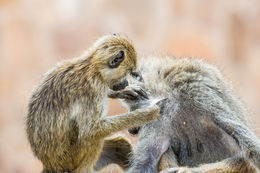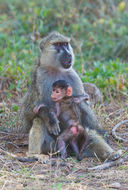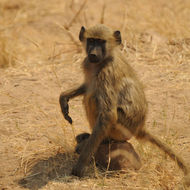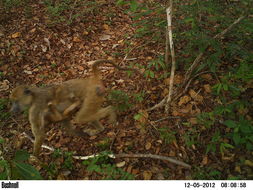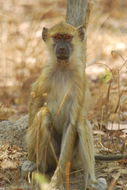-
-
-
-
-
-
2001 California Academy of Sciences
CalPhotos
male
-
2001 California Academy of Sciences
CalPhotos
grooming
-
2002 California Academy of Sciences
CalPhotos
mothers and infants
-
2002 California Academy of Sciences
CalPhotos
mothers and infants
-
2010 California Academy of Sciences
CalPhotos
-
2013 California Academy of Sciences
CalPhotos
The yellow baboon inhabits savannas and light forests in the eastern Africa, from Kenya and Tanzania to Zimbabwe and Botswana. It is diurnal, terrestrial, and lives in complex mixed gender social groups, with anywhere from 8 to 200 individuals per troop. It is omnivorous with a preference for fruits, but it also eats other plant parts as well as insects. Baboons are highly opportunistic eaters and will eat almost any food they come across.
-
2013 California Academy of Sciences
CalPhotos
The yellow baboon inhabits savannas and light forests in the eastern Africa, from Kenya and Tanzania to Zimbabwe and Botswana. It is diurnal, terrestrial, and lives in complex mixed gender social groups, with anywhere from 8 to 200 individuals per troop. It is omnivorous with a preference for fruits, but it also eats other plant parts as well as insects. Baboons are highly opportunistic eaters and will eat almost any food they come across.
-
2013 California Academy of Sciences
CalPhotos
The yellow baboon inhabits savannas and light forests in the eastern Africa, from Kenya and Tanzania to Zimbabwe and Botswana. It is diurnal, terrestrial, and lives in complex mixed gender social groups, with anywhere from 8 to 200 individuals per troop. It is omnivorous with a preference for fruits, but it also eats other plant parts as well as insects. Baboons are highly opportunistic eaters and will eat almost any food they come across.
-
2013 California Academy of Sciences
CalPhotos
The yellow baboon inhabits savannas and light forests in the eastern Africa, from Kenya and Tanzania to Zimbabwe and Botswana. It is diurnal, terrestrial, and lives in complex mixed gender social groups, with anywhere from 8 to 200 individuals per troop. It is omnivorous with a preference for fruits, but it also eats other plant parts as well as insects. Baboons are highly opportunistic eaters and will eat almost any food they come across.
-
2013 California Academy of Sciences
CalPhotos
The yellow baboon inhabits savannas and light forests in the eastern Africa, from Kenya and Tanzania to Zimbabwe and Botswana. It is diurnal, terrestrial, and lives in complex mixed gender social groups, with anywhere from 8 to 200 individuals per troop. It is omnivorous with a preference for fruits, but it also eats other plant parts as well as insects. Baboons are highly opportunistic eaters and will eat almost any food they come across.
-
2013 California Academy of Sciences
CalPhotos
The yellow baboon inhabits savannas and light forests in the eastern Africa, from Kenya and Tanzania to Zimbabwe and Botswana. It is diurnal, terrestrial, and lives in complex mixed gender social groups, with anywhere from 8 to 200 individuals per troop. It is omnivorous with a preference for fruits, but it also eats other plant parts as well as insects. Baboons are highly opportunistic eaters and will eat almost any food they come across.
-
2013 California Academy of Sciences
CalPhotos
The yellow baboon inhabits savannas and light forests in the eastern Africa, from Kenya and Tanzania to Zimbabwe and Botswana. It is diurnal, terrestrial, and lives in complex mixed gender social groups, with anywhere from 8 to 200 individuals per troop. It is omnivorous with a preference for fruits, but it also eats other plant parts as well as insects. Baboons are highly opportunistic eaters and will eat almost any food they come across.
-
2013 California Academy of Sciences
CalPhotos
The yellow baboon inhabits savannas and light forests in the eastern Africa, from Kenya and Tanzania to Zimbabwe and Botswana. It is diurnal, terrestrial, and lives in complex mixed gender social groups, with anywhere from 8 to 200 individuals per troop. It is omnivorous with a preference for fruits, but it also eats other plant parts as well as insects. Baboons are highly opportunistic eaters and will eat almost any food they come across.
-
Observer: Oschadleus HDDate of record: 2012-06-03Species name: Papio cynocephalusCommon name: Yellow BaboonFamily: CercopithecidaeRecord status: ACCEPTED.
-
Observer: Hart NickDate of record: 2012-08-21Species name: Papio cynocephalusCommon name: Yellow BaboonFamily: CercopithecidaeRecord status: ACCEPTED.
-
Observer: Kilpin A.G.Date of record: 2012-01-05Species name: Papio cynocephalusCommon name: Yellow BaboonFamily: CercopithecidaeRecord status: ACCEPTED.
-
Observer: McCleland WarrenDate of record: 2011-12-05Species name: Papio cynocephalusCommon name: Yellow BaboonFamily: CercopithecidaeRecord status: ACCEPTED.
-
Observer: McCleland WarrenDate of record: 2011-12-05Species name: Papio cynocephalusCommon name: Yellow BaboonFamily: CercopithecidaeRecord status: ACCEPTED.
-
Observer: Hart NDate of record: 2013-10-22Species name: Papio cynocephalusCommon name: Yellow BaboonFamily: CercopithecidaeRecord status: ACCEPTED.

